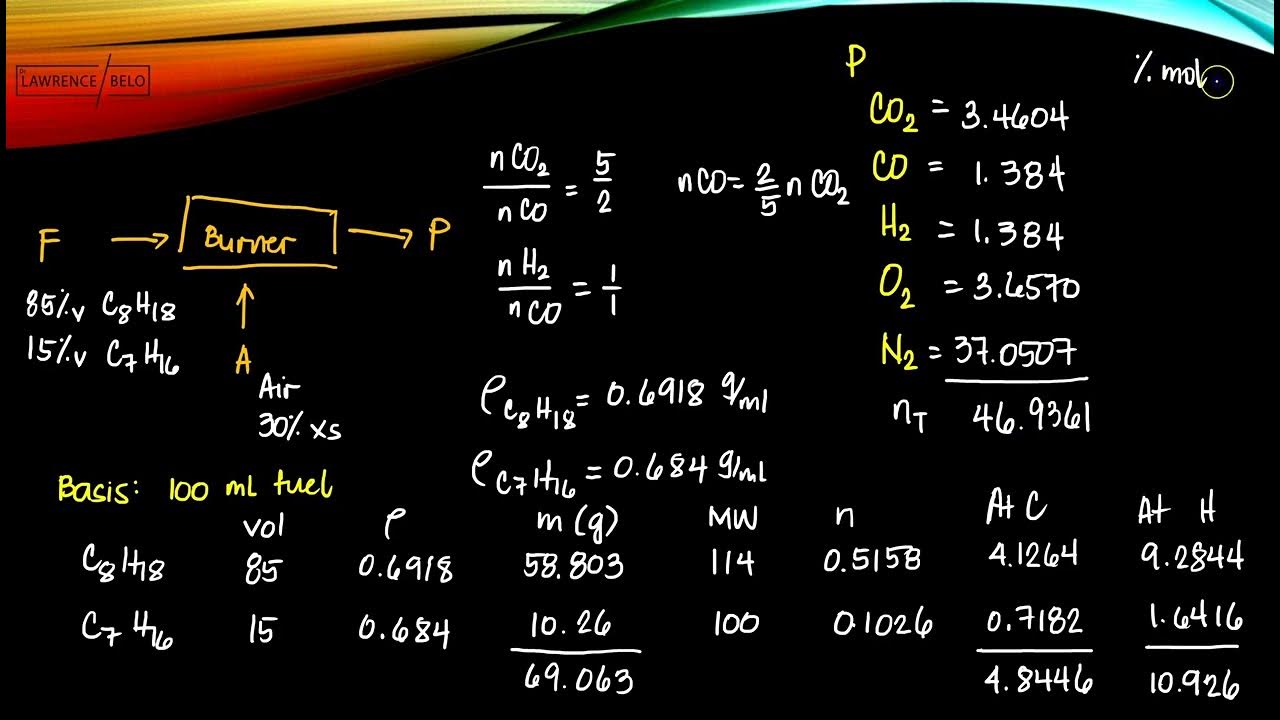Identification of Gases
Summary
TLDRThis video explains how scientists identify gases like carbon dioxide, oxygen, and hydrogen based on their characteristic properties. It outlines a lab experiment to test these gases using specific tools such as matches, wooden splints, and lime water. The video highlights three tests: hydrogen causes a small explosion, oxygen reignites a glowing splint, and carbon dioxide turns lime water cloudy. If results are unclear, repeating the experiment helps avoid errors. By understanding the personality of each gas, viewers can accurately identify them and apply safety precautions when handling gases.
Takeaways
- 🔍 Identifying gases involves recognizing their characteristic properties, akin to their 'personalities'.
- 💥 Hydrogen can be identified by its explosive nature when a lit wooden splint is brought close to it.
- 🔥 Oxygen can be identified by its ability to reignite a glowing wooden splint that has been extinguished.
- 🌫️ Carbon dioxide can be identified by its reaction with lime water, which causes the lime water to turn cloudy or milky.
- 🧪 The lab experiment involves using three test tubes containing CO2, H2, and O2, matches, wooden splints, and lime water.
- 🔬 Scientists use distinctive traits to identify gases, which are their characteristic properties.
- 🧐 The objective of the lab is to identify the properties of carbon dioxide, oxygen, and hydrogen.
- 📝 A hypothesis is created to explain observations of the gases' characteristic properties or personalities.
- ⚠️ Safety precautions are implied when handling different gases, though not explicitly detailed in the script.
- 🔁 If results are inconclusive, the experiment may need to be repeated to eliminate human error.
- 🌐 Gases like carbon dioxide, oxygen, and hydrogen are abundant in the environment and have many practical uses.
Q & A
Question 1: How do scientists identify gases that cannot be seen, smelled, or touched?
-Scientists identify gases based on their characteristic properties, which are distinctive traits that can be observed through specific reactions or behaviors.
Question 2: What is meant by a 'characteristic property' of a gas?
-A 'characteristic property' refers to a unique trait or behavior of a gas that helps in its identification, such as its reaction to fire or limewater.
Question 3: What materials are needed for the gas identification lab?
-The materials needed for the lab are three test tubes containing carbon dioxide (CO2), hydrogen (H2), and oxygen (O2), matches, wooden splints, and limewater.
Question 4: What test can identify hydrogen gas?
-Hydrogen gas can be identified by bringing a lit wooden splint near the gas. If a small explosion occurs, the gas is likely hydrogen.
Question 5: How can oxygen be identified using a glowing wooden splint?
-To identify oxygen, extinguish a lit wooden splint but keep the tip glowing. Insert the glowing splint into the test tube. If the splint glows brighter or reignites, the gas is likely oxygen.
Question 6: What reaction occurs when carbon dioxide is introduced to limewater?
-When carbon dioxide is introduced to limewater, the limewater turns cloudy or milky, indicating the presence of CO2.
Question 7: What should you do if the test results are inconclusive?
-If the test results are inconclusive, the experiment should be repeated to eliminate the possibility of human error.
Question 8: Why is it important to repeat the experiment if two tests show positive results for the same gas?
-Repeating the experiment helps ensure the accuracy of the results and reduces the likelihood of human error or test contamination.
Question 9: What is the hypothesis for this gas identification experiment?
-The hypothesis is that the gases can be identified based on their characteristic reactions: hydrogen will cause a small explosion, oxygen will reignite a glowing splint, and carbon dioxide will turn limewater cloudy.
Question 10: What safety precautions should be taken when handling gases in this experiment?
-When handling gases, it's important to work in a well-ventilated area, avoid direct contact with flammable gases, and use proper protective equipment like safety goggles and gloves.
Outlines

此内容仅限付费用户访问。 请升级后访问。
立即升级Mindmap

此内容仅限付费用户访问。 请升级后访问。
立即升级Keywords

此内容仅限付费用户访问。 请升级后访问。
立即升级Highlights

此内容仅限付费用户访问。 请升级后访问。
立即升级Transcripts

此内容仅限付费用户访问。 请升级后访问。
立即升级浏览更多相关视频

Testing for Hydrogen, Oxygen, Carbon Dioxide, Ammonia and Chlorine | Tests | Chemistry | FuseSchool

GCSE Chemistry Revision "The Atmosphere"

Pengantar Oseanografi - Acidity, Alkalinity dan Dissolve Gases

Testing For Hydrogen, Oxygen, Carbon Dioxide & Chlorine | Matter | Chemistry | FuseSchool

18 A - Sample Problem on Combustion of Liquid Fuels (Case 1)

INTRODUÇÃO À QUÍMICA AQUÁTICA (mini-aula)
5.0 / 5 (0 votes)
